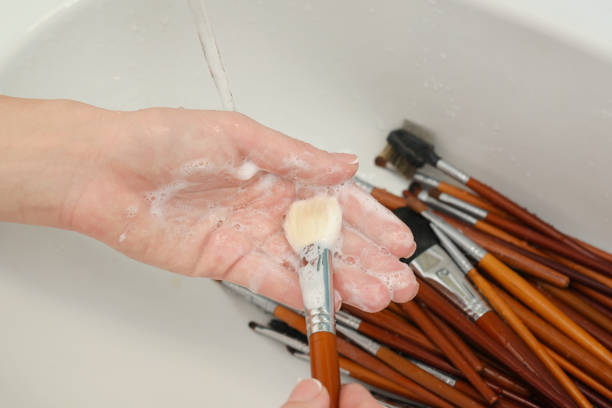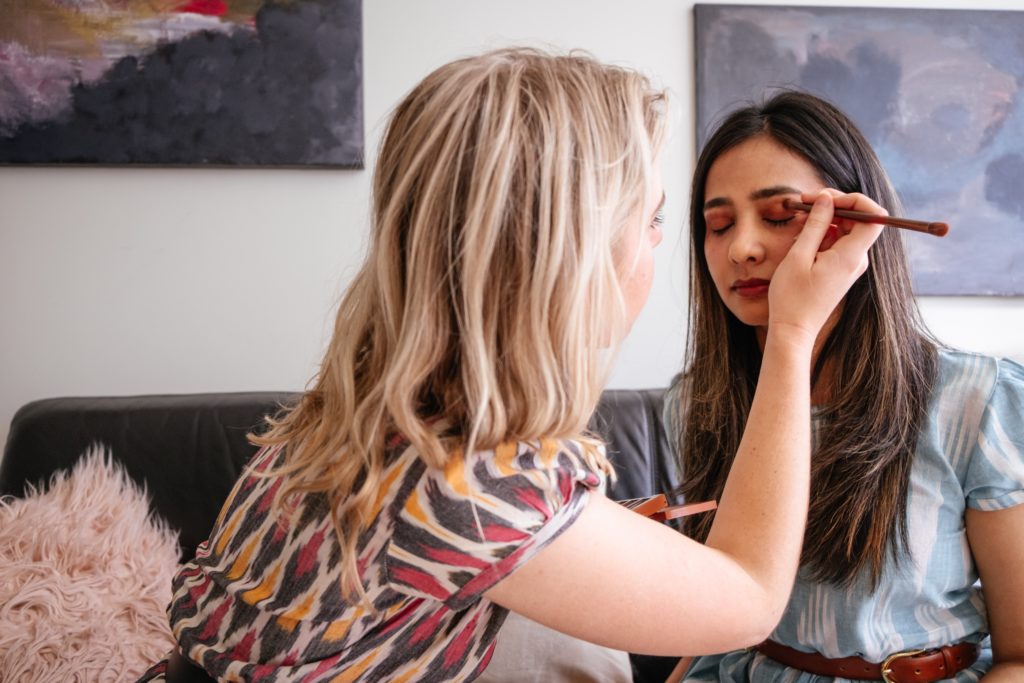A flawless makeup look starts with the right tools. While makeup products play a significant role, the application process is equally important, and this is where makeup brushes come into play. From foundation to eyeshadow, using the correct brush enhances precision, coverage, and overall finish. In this guide, we’ll dive into essential makeup brushes, their uses, and tips to help you master your makeup routine.
Why Makeup Brushes Matter
Makeup brushes aren’t just fancy accessories—they’re tools that can transform how your makeup looks and feels on your skin. Using your fingers may work, but brushes offer better blending, control, and hygiene. They also allow for a more even, polished application, ensuring your makeup looks professionally done.
Essential Makeup Brushes and Their Uses
Not all brushes are created equal. Here are the essential brushes every makeup lover needs in their collection:
1. Foundation Brush
A foundation brush is a must-have for even, smooth coverage. It helps blend liquid, cream, or powder foundation flawlessly into the skin without streaks. Look for a dense, flat brush for liquid foundations and a round, fluffy brush for powder.
2. Concealer Brush
For precision in concealing, a small concealer brush is ideal. It allows you to target specific areas, like blemishes or under-eye circles, without over-applying the product. The tapered end also makes it easier to reach tricky spots, such as around the nose or under the eyes.
3. Powder Brush
A large, fluffy powder brush helps set your foundation and control shine. Use it to dust translucent or setting powder lightly over your face for a smooth, matte finish. Its soft bristles ensure you don’t apply too much product, giving your skin a natural, airbrushed look.
4. Blush Brush
The blush brush is designed to apply color to the apples of your cheeks and blend it seamlessly into your skin. The brush’s angled shape helps to follow the natural contours of your face, ensuring the blush is applied evenly and naturally.
5. Contour Brush
To define your cheekbones and create dimension, a contour brush is essential. Its angled bristles make it easy to apply contouring products under the cheekbones, along the jawline, and on the sides of the nose. Precision is key here, so the smaller size of the brush is perfect for controlled application.
6. Highlighter Brush
A fan or small tapered brush works well for applying highlighter. This brush helps dust highlighter onto your cheekbones, the bridge of your nose, and your brow bone with subtlety. It adds that perfect glow without looking overdone.
7. Eyeshadow Brush
Eyeshadow brushes come in various sizes, but the basic flat shader brush is essential for applying color to your eyelids. Its dense bristles pack on pigment, while a fluffy blending brush helps to soften harsh lines and blend different shades seamlessly.
8. Eyebrow Brush
An angled eyebrow brush is perfect for filling in your brows with powder or pomade. The stiff, angled bristles give you precise control, ensuring your brows look defined but natural. Most eyebrow brushes come with a spoolie on the opposite end to comb through and shape your brows.
9. Lip Brush
For precise lip color application, a lip brush is a game-changer. It helps you outline and fill in your lips evenly, ensuring sharp, clean edges and a smooth finish. Lip brushes also help you use less product while offering more control over the application.
Techniques for Using Makeup Brushes
Knowing how to use your brushes is just as important as owning them. Here are some techniques to get the best results:
Blending Is Key
The secret to professional-looking makeup is blending. Use soft, circular motions with your brush to blend foundation, eyeshadow, and contour products. This ensures there are no harsh lines, and everything looks smooth and natural.
Use the Right Brush for Each Product
Each brush is designed for a specific product or area of the face. Avoid using the same brush for multiple products, as this can muddy the colors and create an uneven finish. Invest in brushes tailored to the product you’re using for the best results.
Tap Off Excess Product
Before applying any powder-based product (like eyeshadow or blush), tap the brush lightly to remove excess product. This prevents applying too much at once, which can be difficult to blend out.
Clean Your Brushes Regularly
Dirty brushes not only lead to poor application but can also harbor bacteria that may cause breakouts. Clean your brushes weekly with a gentle soap or a brush cleaner to keep them in good condition and your skin healthy.
Use a Light Hand
When applying makeup with a brush, use a light hand. Pressing too hard can cause streaks or patchiness, while a gentle touch helps with even blending and layering of products.
Conclusion
Mastering the art of makeup brushes is all about understanding which brushes to use and how to apply makeup effectively. With the right tools and techniques, you can elevate your makeup game and achieve flawless results every time. Remember to clean your brushes regularly and practice your blending techniques to create smooth, natural looks.
FAQs
1. How often should I clean my makeup brushes?
It’s recommended to clean your makeup brushes at least once a week. This prevents the buildup of makeup residue, oils, and bacteria, ensuring smooth application and maintaining healthy skin.
2. Can I use the same brush for different products?
No, using the same brush for multiple products can cause colors to mix and result in an uneven application. It’s best to have specific brushes for foundation, blush, eyeshadow, etc.
3. What’s the best way to dry my brushes after cleaning?
After cleaning, reshape the bristles and lay the brushes flat on a towel. Avoid standing them upright, as this can cause water to seep into the handle and loosen the glue holding the bristles.
4. Do I need expensive brushes for good results?
While high-quality brushes can make a difference, you don’t need to spend a fortune. Look for brushes with soft bristles and a comfortable handle. Affordable brands often offer excellent quality for everyday use.
5. What’s the best brush for beginners?
A foundation brush and a blending brush are great starting points for beginners. These two tools will help you achieve a flawless base and smoothly blended eyeshadow, making them essential for any makeup routine.
6. Can I use makeup brushes with cream products?
Yes, but be sure to use synthetic brushes for cream products, as natural bristles may absorb too much product. Synthetic brushes are designed to work well with cream and liquid formulas, offering smoother application.



